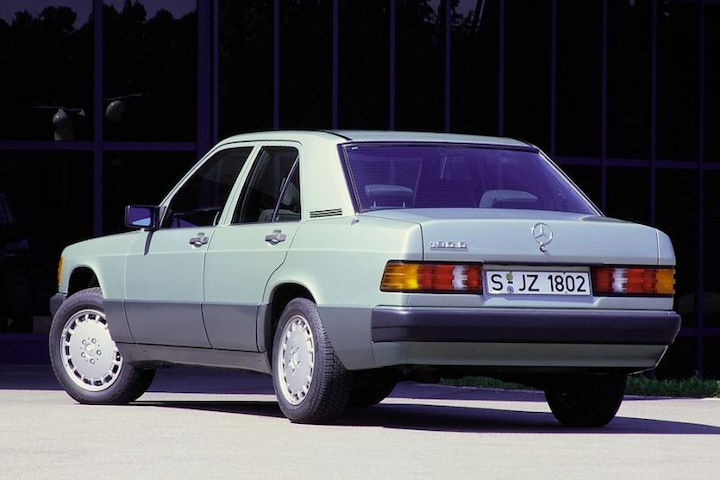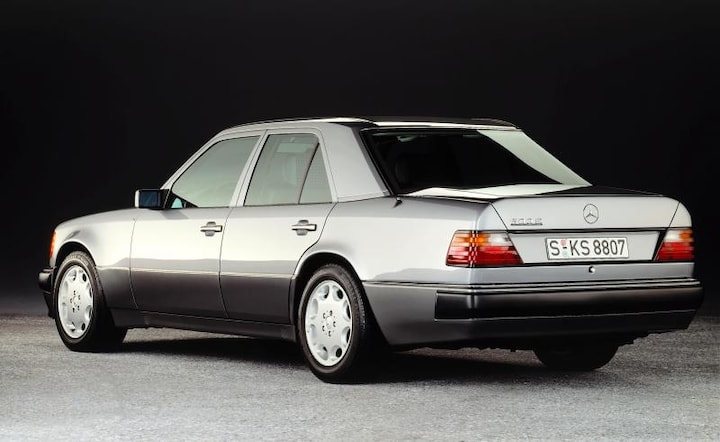Looking back at top years

Mercedes-Benz did not use empty words when the W201, the Mercedes 190, was presented. “The new Mercedes models will set the standard for compact car technology and styling in the coming years,” the brand claimed. Not a word was lied to. After CLE, CLA Concept and E-class, car designer Niels van Roij goes back in time to analyze the Mercedes 190.
The W201 series, as the Mercedes 190 is called in Mercedes jargon, went into production after a lengthy exploration phase, during which a wide variety of alternative concepts were evaluated and tested. Only then was the eight-year development program customary for Mercedes-Benz implemented. If there is one aspect that the W201 embodies through this extremely thorough approach, it is quality. Quality of technical specifications, passive and active safety, aerodynamic discoveries and above all: skilful style.
Under the leadership of Chief Designer Bruno Sacco, the impossible was made possible. Through the Vertical Affinity/Horizontal Homogeneityprinciples, models were drawn that embodied the exceptional state of Mercedes technology.
Mercedes 190 is the pinnacle of design science
The Mercedes 190 managed to accomplish the most complex visual tour de force: the car appears as an extremely coherent, optically robust and infinitely consistent design. A model, moreover, with the characteristics of a much more substantial car – in terms of size. This four-wheeled mirage is the pinnacle of design science, knowledge of form and proportional insight.

The contrast could not be greater with current reality, because nowadays nothing is as ephemeral as the disposable Benzes of ‘Flash Gorden’, as the current Chief Designer of Mercedes-Benz is called among fellow designers. While Bruno Sacco’s work is timeless, the current design boss is focused on ever-ephemeral fashion fads, both for his own presentation and clothing style and that of the automobiles that spring from his brain. The bad ingredients are topped off with a sauce of bad taste: Sensual Purity is the conceptually completely empty slogan with which the current Chief Designer refers to his work during every presentation. A sad, styleless name for a design vision without depth – fitting.
This differs drastically from the understated elegance of Bruno Sacco design principles. Gorden Wagener likes exaggerations and displays his work with great bravado. His attitude towards the Sacco period is also characteristic. The retina-searing visual noise of tinsel chrome, brash lines and cheap-looking aggression that he suggests make frantic attempts to distract attention from the banality underneath, especially when it concerns the 190-descendant A-class. The contrast between the two makes it clear how small the meaning of the three-pointed star has become, even though it was never screwed larger onto the front of a Mercedes.

W126 S-class was impressive…
The W126 S-class was larger, making it more impressive to many because of its statesmanlike appeal. Government leaders loved it.



W124 a design icon…
The W124 was a design icon of unprecedented proportions, about which entire books have quite rightly been written.



But the W201 was the most impressive
However, the physically small W201 is the most impressive Mercedes. This first Baby Benz defied the toughest assignment of all. The 190 was a benchmark car, designed by the no less than visionary Sacco. Despite the limited stature of the 190, it is therefore the greatest Mercedes-Benz design achievement ever.

– Thanks for information from Autoweek.nl